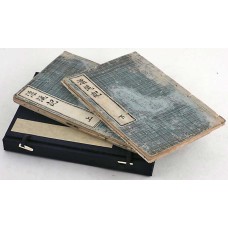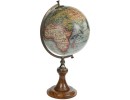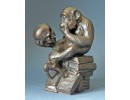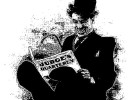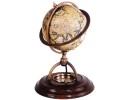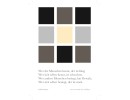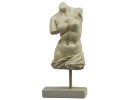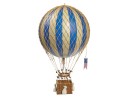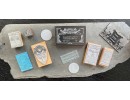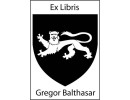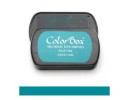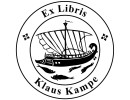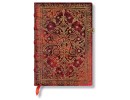Report of a Pacific trip and description of the United States of America.
Japan, Bunkyu 3 (1863). First edition. 2 vols. Large octavo (approx. 23.5 × 16 cm). 34, 30 two-ply sheets; with 5 foldable woodcut plates and 14 double and one-sided woodcut drawings in the text. Images within a single border, main text nine vertical lines. Original Japanese Fukuro-Toji bindings: blue-gray paper cover with sheets sewn together with thread and original paper title labels on the front covers. Red ink stamps on the first sheets and inside of the back covers of each ribbon. Housed in a later navy blue Japanese cloth folder with a paper label from a Japanese bookstore in the top cover. Covers and title labels rubbed, occasionally repaired in text wormholes, otherwise a very good sentence.
A Japanese story: What he saw and the people he met
Very rare Japanese overprint with only four paper copies found in Worldcat. First edition of the early important Japanese report of a trip to the Pacific and description of the United States of America, written by a Japanese Hamad Hikozo, better known as Joseph Heco. He became the first Japanese to become a US citizen and published the world's first Japanese-language newspaper ("Kaigai Shimbun" / "Overseas News", Yokohama, 1865-1867). He became the “father of Japanese journalism”. Heco was only 14 when a coastal merchant ship in which he was in October 1850 was blown into the open Pacific by a storm. Rescued by an American freighter “Auckland”, the Japanese survivors were brought to San Francisco and were the second group of Japanese (after John Manjiro visited San Francisco in May 1850). "... Hikozo stayed in America for eight years before returning to Japan. He went to school, worked in a trading company, converted to Catholicism, met American presidents, became a citizen and took the name Joseph Heco. When he returned to Japan in 1859, he probably had more firsthand experience of the United States than any other Japanese. In a way, it can be seen as a symbol of Japan's growing interest and knowledge of the West in the mid-19th century. "(Van Sant, JE Pacific Pioneers: Japanese Travel to America and Hawaii, 1850-1880. University of Illinois Press, 2000. p. 22).
The diary-style narrative recalls Heco's adventures in the Pacific and his life in San Francisco, Baltimore, and New York, including his train journeys, one of the first in Japanese descriptions of black writers in Japanese civil war literature and sympathetic passages about the Confederates and the Slavery (obviously influenced by the views of its American benefactors). The illustrations show the Japanese coastal ship "Eiriki Maru" fighting the storm in the Pacific (with two sea monsters reminiscent of crocodiles lurking in the waves), rescuing the survivors through the "Auckland", a battle scene of the American Civil War ( 1861-65), portraits of an American woman, a Catholic monk and Heco himself with an American, view of the street of San Francisco, New York, pictures of a steamship, a “steam car” (tractor), telegraph lines, an artificial leg, one Steel trestle bridge, naval ship, etc. Overall, an important early Japanese representation of the United States in the 1850s and early years of the Civil War. Three decades later, Heco translated his “Hyoryuki” into a two-volume publication for foreign readers (English: The story of a Japanese: what he saw and the people he met ... Yokohama, 1895).
Tags: old books, travelogue, japan, heco, hamada, hikozo, hyoryuki

